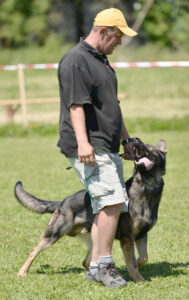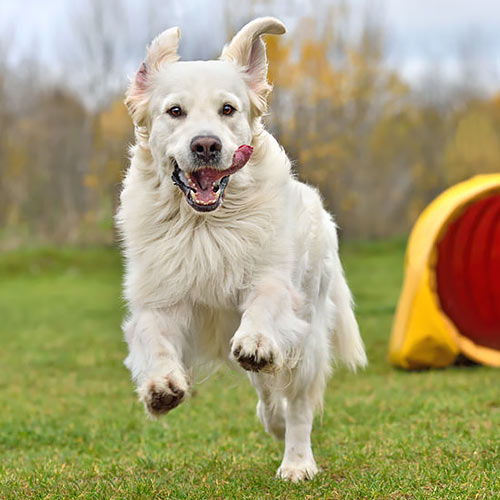Max v Stephanitz is credited as being the “father” of the German Shepherd Dog. In 1925, he wrote a book entitled, The German Shepherd Dog in Word and Picture. There are many wonderful ideas advanced in this expensive book.
In the section of the book about training dogs, he wrote, “A sound training does not aim at producing shy, broken slaves with no will of their own, nor machines whose efficiency depends on external impulses, it keeps itself within bounds, and, though checking the undesirable characteristics of the pupils, it subordinates its private predilections to a higher aim, and tries to produce creatures whose service, out of the their joy in their work, is perfect liberty. This training then must know how to awaken the inborn capacities, and to develop them, and must, in addition, tone down what is superfluous, strengthen what is weak, and guide what is erring into the right path.”
This was quite a statement back in his day! Many/most trainers were using heavy-handed methods that would shut down most of our dogs today. Even in our day, there are still those trainers who think they must yank and crank and bellow and be all big, bad, and ugly in order to get a dog to perform as desired. (One “trainer” bragged that every time his dog wouldn’t Out the bite sleeve, he choked the dog off until the dog passed out) These types tend to boost their own ego by acting superior over another creature. Despicable!

As alluded to by Stephanitz, true dog training is not producing canine slaves. Good dog training produces dogs who enjoy their work. Methods of training should reflect this attitude. To be clear, this isn’t an appeal for so-called “positive-only” training or a call to remove corrections from training. However, whatever humane method is used should keep corrections to a minimum, work with the dog and not against him, as well as include heaps of rewards/encouragement.
Admittedly, this type of training can only be a reality when the breeding behind the dog is what it should be. Many of the dogs produced today have few brains and are unwilling to use what few they have. This type of dog can seldom be trained by using the method advanced in this article. However, to those fortunate trainers/owners who get to work with dogs from a good breeding, these words are written.
Good training does set a dog at liberty. He/she knows what is expected of them and they also know that when those realistic expectations are met, there will be a reward forthcoming. They have been taught what the rules are and also have learned that the trainer will enforce those rules (by some form of correction, even as simple as negative punishment). This kind of dog works joyously. The boundaries are clearly understood. This is a situation that dogs thrive in.
The “inborn capacities,” as Stephanitz calls it, are the genetics within the dog that training can enhance, hone, and bring to its zenith. The dogs inborn desire to hunt can be corralled into solid detection work. His desire to chase and pursue can be channeled into pursuing a suspect. His innate desire to use his nose can be encouraged to follow a track/trail. These capacities are present. The trainer just needs to know how to bring out the very best within the dog. He must also be sure not to dampen or squelch these desires within the dog. Again, good training is liberty – not slavery.
The difference can be seen on the competition field, the police dog on the street, or the pet in his own back yard. You see dogs who are scared of their owners (we’re talking about an otherwise confident dog), despise training, and have lost their desire to achieve.
On the other side of the spectrum is a dog that loves to work and strives to please his/her owner/trainer. He’s looking for cues from the owner, anticipating the trainer’s next move, eager, looking forward, almost bursting with desire to please. That’s training! That’s liberty! That’s joy in work! That’s what trainers should learn to do on a regular basis!
Here at Conifer Canine, we work to accomplish this goal in our training programs. We desire that a dog enjoy the liberty of eagerly pleasing his owner/trainer. We teach these methods in our Dog Trainer College, that budding trainers can attain a higher level than much of the drivel passed off as training in our world. Good training is liberty, not slavery!

